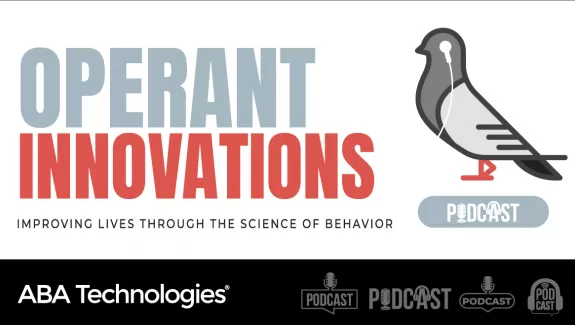
As Useful as a Third Ear
Author: Andy Lattal, PHD
 When I was a graduate student in clinical psychology, lo those many years ago, I was assigned Theodore Reik’s book, Listening with the Third Ear. Reik was a psychoanalyst of considerable reputation and his book was widely read by my generation and earlier generations of clinical psychology students. The message, of course, is that we have to bring our listening behavior under the stimulus control of much more subtle aspects of the speaker’s verbal behavior than simply what the speaker is saying. Place the immediate verbal behavior in a broader context. People’s comments and reflections about themselves and others in their personal environments cannot be taken at face value. Psychoanalysts like Reik saw the value of a third ear as getting to deeper, more psychodynamic mechanisms underlying the person’s overt (verbal) behavior. One need not accept the latter premise to appreciate the value of Reik’s book’s title, or his general message. Imbedded in a client’s or student’s verbal behavior often are subtle hints about what is conventionally labeled abuse, neglect, anxiety, anger, frustration, and many other words we often exclude from our vocabularies, if not our analyses.
When I was a graduate student in clinical psychology, lo those many years ago, I was assigned Theodore Reik’s book, Listening with the Third Ear. Reik was a psychoanalyst of considerable reputation and his book was widely read by my generation and earlier generations of clinical psychology students. The message, of course, is that we have to bring our listening behavior under the stimulus control of much more subtle aspects of the speaker’s verbal behavior than simply what the speaker is saying. Place the immediate verbal behavior in a broader context. People’s comments and reflections about themselves and others in their personal environments cannot be taken at face value. Psychoanalysts like Reik saw the value of a third ear as getting to deeper, more psychodynamic mechanisms underlying the person’s overt (verbal) behavior. One need not accept the latter premise to appreciate the value of Reik’s book’s title, or his general message. Imbedded in a client’s or student’s verbal behavior often are subtle hints about what is conventionally labeled abuse, neglect, anxiety, anger, frustration, and many other words we often exclude from our vocabularies, if not our analyses.
 Such under-appreciation, or even neglect of subtle cues in others’ verbal behavior is an egregious error. By not having our third ears turned on, we miss important cues about the controlling variables of a person’s behavior. We behavior analysts often talk about variability in behavior being the result of uncontrolled sources of variation. Well, here is a huge one. Imbedded in what people tell us are valuable data related to their future well-being, and our role in helping them achieve it. If nothing else, listening for cues as to the control of behavior by variables beyond the immediately observable offers a way to uncover more complicated functional relations between non-immediate environmental variables and behavior.
Such under-appreciation, or even neglect of subtle cues in others’ verbal behavior is an egregious error. By not having our third ears turned on, we miss important cues about the controlling variables of a person’s behavior. We behavior analysts often talk about variability in behavior being the result of uncontrolled sources of variation. Well, here is a huge one. Imbedded in what people tell us are valuable data related to their future well-being, and our role in helping them achieve it. If nothing else, listening for cues as to the control of behavior by variables beyond the immediately observable offers a way to uncover more complicated functional relations between non-immediate environmental variables and behavior.
 How have we missed this rich source of stimulus and historical control over the behavior of people to whom we supposedly are listening? Understandably, behavior analysts are trained to first focus on the immediate, controlling variables of behavior, because many problems can be ameliorated by such focus. In short, such focus is reinforced by creating interventions that result in relatively quick, and large, changes in behavior. Who can criticize the value of that? Often remaining, however, after the short-term gains of intervening on obvious, easily measured, and immediately available behavior, are other sources of control of the behavior that make aspects of it far more intransigent, more resistant to change.
How have we missed this rich source of stimulus and historical control over the behavior of people to whom we supposedly are listening? Understandably, behavior analysts are trained to first focus on the immediate, controlling variables of behavior, because many problems can be ameliorated by such focus. In short, such focus is reinforced by creating interventions that result in relatively quick, and large, changes in behavior. Who can criticize the value of that? Often remaining, however, after the short-term gains of intervening on obvious, easily measured, and immediately available behavior, are other sources of control of the behavior that make aspects of it far more intransigent, more resistant to change.
We need to train behavior analysts to listen for, and then to follow up by uncovering with direct observation if possible, important sources of control of problem behavior that are beyond what our proximate observations reveal. We can’t objectively observe beyond what we see and hear in an interview. Or can we? A third ear is not only one of the most useful tools any behavior analyst working with people—be they clients, students, employees, colleagues or whomever—can have; a third ear is essential.










